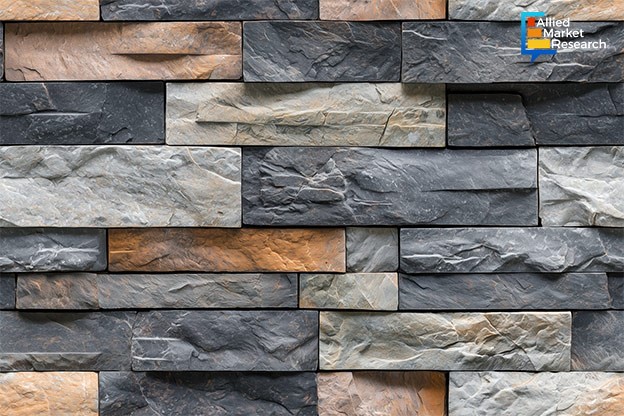How Has Sustainability and Technology Integration Impacted the Cladding Industry?

18 Feb
2025
Highlights:
- Introduction
- Latest trends in the cladding industry
- R&D initiatives and product launches
Cladding is an extra layer attached to the primary structure of the building to provide it with a new look or protect it from different natural agents such as sun, rain, hail, and snow. Claddings, essentially, are non-load-bearing edifices, meaning they do not impact the structural integrity of the building in any way. Over the years, different types of materials have been used in cladding construction processes, including stone, brick, metal, wood, porcelain, foam, and glass. Along with this, polymer-based have also been developed in recent times to offer structure protection from heat and extreme weather conditions.
Apart from protecting the building from external environmental factors, cladding also enhances the fire safety standards of the construction significantly. Furthermore, these materials enhance the durability of the structure and reduce the maintenance and repair costs required for its upkeep. Also, cladding, by giving it a new and unique look, improves the overall aesthetics of the building. Usually, construction companies choose the material to be used based on the climate and weather conditions prevalent in that region. For instance, aluminum is the most popular choice in polar areas, while stone and gravel claddings are preferred in tropical and sub-tropical countries.
Innovative trends in exterior claddings fueling industry growth
The construction sector, for a long time, has been one of the biggest contributors to environmental pollution and degradation. In the last few decades, the growing focus on slowing down the pace of climate change has compelled governments to take steps and measures that reduce the carbon footprint of their economy significantly. As a result, several laws and regulations have been passed in developed and developing countries that mandate real estate developers to opt for sustainable and green building materials that have minimal impact on the surrounding ecosystem.
For instance, the cladding market has seen a notable trend toward the increased use of green concrete. Developed as an alternative to traditional cement and concrete mixtures, this material is manufactured using industrial waste components such as blast slag, fly ash, and silica fume. The use of such compounds reduces the dependence on synthetic chemicals used in conventional products, thus promoting sustainability and eco-friendly production procedures. Furthermore, regular cement manufacturing involves several activities such as quarrying, limestone heating, crushing, etc., which emit large volumes of carbon dioxide and other greenhouse gases into the atmosphere. On the other hand, producing green concrete is a far less polluting and energy-efficient process, thus helping construction companies decarbonize their operations.
Along with this, the emergence of smart cladding systems has also played an important role in the growth of the industry. Recently, certain companies have developed sensor-embedded smart cladding panels that monitor various parameters and performance metrics such as temperature, moisture, and air quality. Based on the data collected through these sensing devices, the residents of the building can optimize the building operations, thereby reducing power consumption drastically. Also, these intelligent solutions have self-cleaning abilities which bring down the cost of repair and maintenance significantly.
Increased investments in R&D projects augmenting the sector’s growth rate
In the past few years, initiatives such as the GELCLAD project have opened numerous investment avenues in the cladding industry. Funded by the European Union and several other private companies and research institutes, the program aims to develop smart cladding eco-panels that are affordable and lightweight. Such R&D activities are expected to help the industry gather a revenue of $485.5 billion by 2032. The sector accounted for $248.3 billion in 2023 and is estimated to rise at a CAGR of 7.4% during 2024-2032.
Apart from this, many leading companies have launched innovative products to expand their footprint in the industry. For instance, in Jan 2022, Smith & Fong Co., an eco-friendly construction materials developer, unveiled PalmShell™, a high-quality palmwood cladding solution designed specifically for residential and commercial spaces. Similarly, in January 2024, Alumil India, an aluminum extrusion company, announced the launch of SMARTIA M7000 Barcode Cladding, an intelligent wall cladding solution for interior and exterior applications. The system offers LED integration and customizable profiles which enhance the overall aesthetics of the building.
Summing up, the shift toward environmental sustainability and the increasing use of green concrete solutions has accelerated the growth of the cladding industry. Additionally, the integration of advanced sensors and other technologies is predicted to bring in numerous investment opportunities in the sector.
Contact our experts for insights into the latest advancements and emerging trends shaping the landscape!

Akhilesh Prabhugaonkar
Author's Bio- Akhilesh Prabhugaonkar holds a bachelor’s degree in Electronics Engineering from the reputed Vishwakarma Institute of Technology. He has a special interest in the fields of forensics, world history, international relations and foreign policy, sports, agriculture, astronomy, security, and oceanography. An ardent bibliophile and melophile, Akhilesh loves to write on topics of his interest and various other societal issues. This love for writing made him enter the professional world of content writing and pursue his career in this direction.
Construction Sustainable Materials: How Have Green Building Practices Transformed the Industry?
Avenue: Entire Library membership of Allied Market Research Reports at your disposal
- Avenue is an innovative subscription-based online report database.
- Avail an online access to the entire library of syndicated reports on more than 2,000 niche industries and company profiles on more than 12,000 firms across 11 domains.
- A cost-effective model tailored for entrepreneurs, investors, and students & researchers at universities.
- Request customizations, suggest new reports, and avail analyst support as per your requirements.
- Get an access to the library of reports at any time from any device and anywhere.
Related Post
-
How are Submarine Cables Transforming Global Connectivity with Enhanced User Experience?
-
Endoscopy Procedures: Transformations in Techniques and Applications
-
AI-Powered Video Analytics: How the Product Actually Works for enterprises
-
Painting Robots: Transforming Precision Coating and Creative Applications
-
Innovations in Pharmacovigilance Systems Advancing Patient Safety
-
Understanding Edge Security: Keeping Data Safe Near the Source
-
Exploring the Use and Advancements of 3D Laser Scanners in Professional Applications
-
Reinforcing Industrial Controls with Smarter Tools and Training








